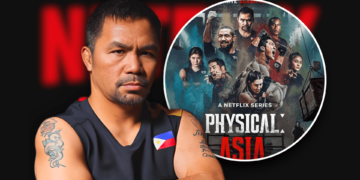Walang tatalo sa teleserye.
In 2025, the Philippines is still glued to dramatic slaps, shocking plot twists, and bida-kontrabida showdowns. While the rest of the world obsesses over reality TV or algorithm-pilled content, Filipinos continue to rally around the classic format that raised generations.
But why does the teleserye still reign supreme in the streaming age?
The Filipino audience wants to feel, not just watch
Filipinos don’t watch for background noise.
We tune in for emotional payoff—whether it’s a poor protagonist’s redemption arc or a mother’s tearful monologue at the dinner table.
According to a peer-reviewed study on Filipino audiences and teleseryes published in Media International Australia, teleseryes remain dominant because of how they reflect everyday experiences, especially around family, love, and hardship.
These stories aren’t just drama for drama’s sake. They carry cultural codes. From generational trauma to the nuances of utang na loob, teleseryes serve up emotion in a language Filipinos understand—not just linguistically, but spiritually.
Still the king of Philippine screens
Even in 2025, TV isn’t dead in the Philippines.
A 2023 report by the Philippine Statistics Authority shows that television remains the most consumed medium in Filipino households, particularly outside Metro Manila.
That trust extends to networks that have defined the genre: ABS-CBN, despite losing its franchise, still commands billions of views online, while GMA dominates traditional airwaves.
ABS-CBN’s YouTube channel alone boasts over 50 million subscribers and nearly 60 billion views, much of it from teleserye content like Batang Quiapo and Dirty Linen.
Even on new platforms, it’s the same formula: high-stakes drama, viral twists, and memeable moments.
“Hindi pa tapos ang laban”: Teleseryes as social currency
The appeal doesn’t end with the story. It extends to how audiences interact with it.
According to Social Media Watch PH, Filipinos share more than 15,000 teleserye-related TikToks per week—from dramatic edits to satire, reaction videos, and scene reenactments.
These shows become a kind of social glue.
When Dirty Linen aired its first 10 episodes in early 2023, it clocked in over 1 billion views across platforms and became a daily trending topic on X (formerly Twitter), with over 40,000 tweets per episode. Drama clips from Darna also exploded on TikTok, generating over 2.3 billion views in just its premiere week.
Tropes that won’t die, and that’s the point
Yes, we’ve seen the evil stepmother. Yes, the amnesia arc is back. But audiences keep coming back not because they don’t know what’s going to happen—but because they do.
These shows reflect pressing social issues like corruption or family conflict, and their dramatic intensity offers viewers a release valve—letting them both empathize and find moral direction in the chaos.
Teleseryes also serve as public therapy. Watching characters survive betrayal or poverty gives audiences a way to process their own struggles. It’s not just entertainment—it’s survival TV.
Maria Clara with a plot twist
Take Maria Clara at Ibarra, for instance. The GMA series gave teleserye treatment to Filipino literature, reintroducing Noli Me Tangere through the eyes of a Gen Z nursing student transported into the past.
It became one of the most celebrated shows of 2023, praised for its ability to blend history, fantasy, and nationalism. Rappler called it “appointment television,” noting that its appeal came from both nostalgia and its clever modernization of tropes.
That mix of high production value, cultural storytelling, and digital virality made it a cross-generational hit. Even titos and titas who once scoffed at teleseryes found themselves defending Klay’s journey in family Viber threads.
A format that evolves with the times
Far from being stuck in the past, the teleserye has evolved. Livestreamed finales, hashtag-driven plot discussions, and fast-cut recaps show that Philippine dramas understand the rhythm of digital life.
The stories are still slow-burn, but their packaging now speaks Gen Z fluently.
ABS-CBN, GMA, and even new players like VivaMax are tailoring content for online viewers. Some episodes premiere on streaming before TV; others are chopped into bite-sized daily clips with trending music underlays. The teleserye isn’t dying—it’s shape-shifting.
A pop-hit legacy: teleseryes that broke the internet
When teleseryes hit, they hit hard. The Broken Marriage Vow wasn’t just a ratings success; it sparked an avalanche of memes, parody dubs, and lip-sync content that took over TikTok and Facebook.
Kadenang Ginto birthed viral lines like “Cassie, ‘di ka muna papasok,” cementing characters as meme icons and influencers in their own right. The fandom doesn’t stop at viewership—it bleeds into digital culture, influencing how people joke, talk, and even dress.
Why the teleserye still hits in 2025
In a world of curated content, teleseryes remain unfiltered. They wear their heart on their sleeve. And that sincerity, even when melodramatic, feels more honest than most.
As long as the Filipinos’ lives remain entangled in love, sacrifice, family, and fate, teleseryes will have a stage. They aren’t just about what’s dramatic. They’re about what’s familiar.
And sometimes, we don’t need something new. We just need something that knows us well enough to tell the same story again—with feeling.












